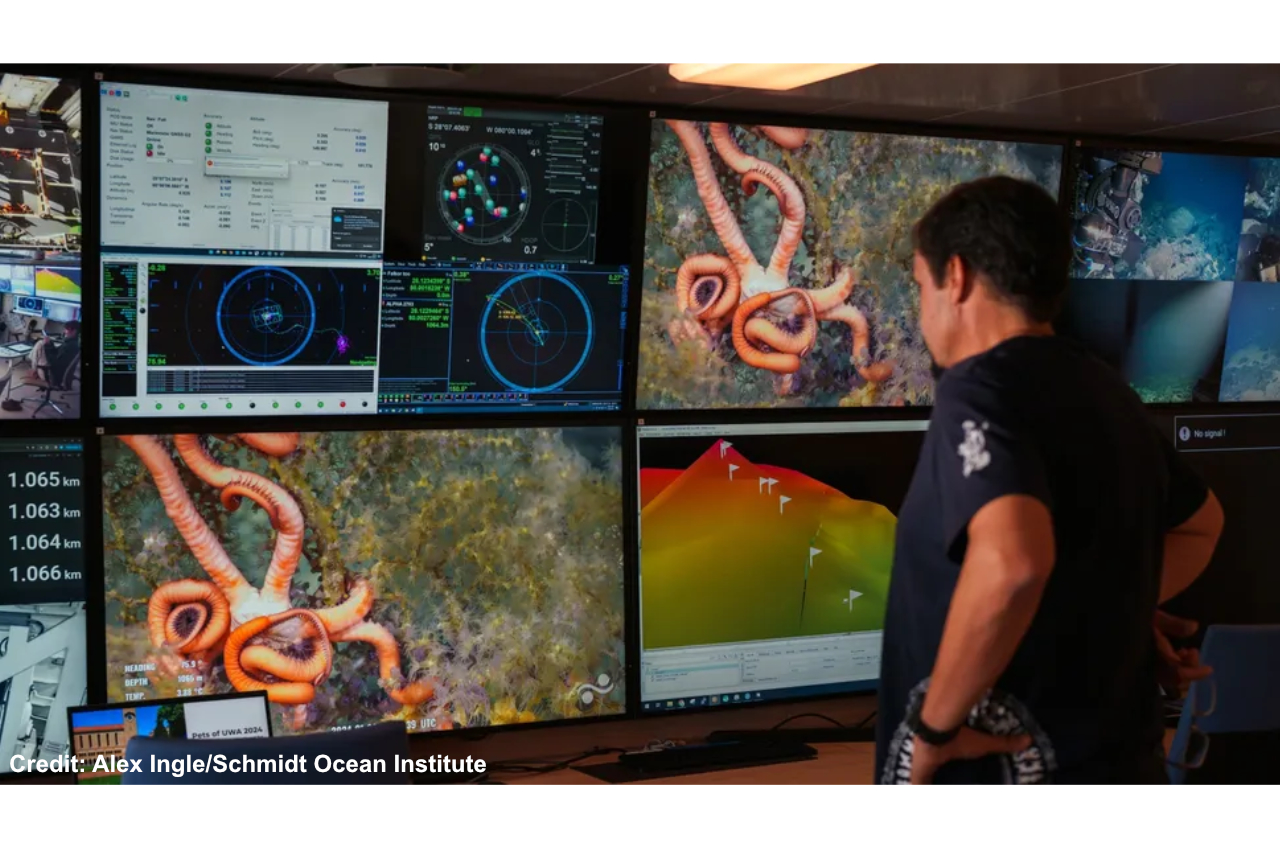'Mind-blowing' deep sea expedition uncovers more than 100 new species and a gigantic underwater mountain

A recent deep-sea expedition off the coast of Chile led to the discovery of a plethora of new scientific findings. Researchers aboard the Schmidt Ocean Institute's research vessel Falkor uncovered over 100 previously unknown marine species and several massive seamounts. The largest seamount discovered was approximately four times the size of the world's tallest building. The expedition, titled "Seamounts of the Southeast Pacific," focused on exploring seamounts in three main areas: the Nazca and Salas y Gómez ridges, comprising over 200 seamounts stretching 1,800 miles from Chile to Easter Island, and the Juan Fernández and Nazca-Desventuradas marine parks. The exploration revealed a diverse array of deep-sea organisms, including intricate sponges, spiraling corals, a unique lobster species, oblong sea urchins, and a striking red "sea toad" with distinctive hand-like fins. The expedition occurred between January 8 and February 11, showcasing the remarkable biodiversity and geological features of the deep-sea environment off the Chilean coast.

During an expedition off the coast of Chile, researchers mapped approximately 20,400 square miles (52,800 square kilometers) of ocean, uncovering four previously unknown solitary seamounts. The largest of these seamounts, named Solito, rises 11,581 feet (3,530 meters) above the seafloor, surpassing the height of the Burj Khalifa, the world's tallest building. Using an underwater robot, the team explored the slopes of 10 seamounts, discovering over 100 potentially new species including corals, sponges, sea urchins, mollusks, and crustaceans. Javier Sellanes, the lead scientist on the expedition, expressed astonishment at the abundance of new species, particularly among sponges, stating that the findings exceeded their expectations.
The researchers collected samples of the newly discovered marine species during the expedition and will embark on the process of species identification, which could take many years due to the vast number of samples. Most of these species inhabit vulnerable habitats, such as cold-water corals and sponge gardens, which are at risk from activities like trawling and deep-sea mining. While species within the Juan Fernández and Nazca-Desventuradas parks are legally protected, the seamounts along the Nazca and Salas y Gómez ridges lack protection. This expedition is part of the Schmidt Ocean Institute's ongoing efforts to map seamounts in the southeast Pacific, aiming to uncover "biological hotspots" that enhance our understanding of Earth's biodiversity. Previous expeditions have revealed massive seamounts, each at least twice the height of the Burj Khalifa, emphasizing the importance of studying these ecosystems to expand our knowledge of life on our planet. To learn more, please go to Harry Baker’s article in Live Science https://www.livescience.com/animals/mind-boggling-deep-sea-expedition-uncovers-100-new-species-and-a-gigantic-underwater-mountain